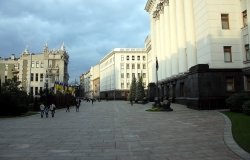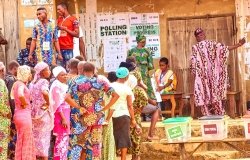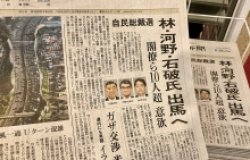Organized Crime in Central America
Panelists explore the specific, local dynamics of organized crime in El Salvador, Honduras, and Guatemala and the transnational nature of the major criminal networks in the region.
Overview
On December 14, 2010, authors of three studies commissioned by the Latin American Program on organized crime in Central America presented the initial results of their research. The case studies explored the specific, local dynamics of organized crime in El Salvador, Honduras, and Guatemala, the three countries of the "Northern Triangle," while also reflecting on the transnational nature of the major criminal networks in the region. According to Cynthia Arnson, director of the Latin American Program, an analysis of sub-regional dynamics is especially critical given the levels of violence in Mexico and the displacement of drug cartel activity from Mexico to Central America. Quoting analyst Stephen Dudley, Arnson noted that 90 percent of illegal drugs arriving in the United States pass through Central America and Mexico; about half this amount is trafficked through El Salvador, Guatemala, and Honduras.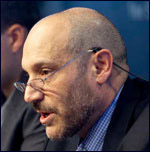 In discussing the Salvadoran case, Douglas Farah, International Assessment and Strategy Center, noted that the dynamics of organized crime in Central America must be situated within a post-conflict context that makes these states particularly vulnerable to conflict and criminal activity. In El Salvador, Cold War networks that formed to transport weapons and people during the conflict survived the peace processes, only to evolve into criminal entities in their aftermath. These groups differ from Colombian organized crime groups that began small and grew increasingly sophisticated over of time. Instead, leaders of current criminal groups in El Salvador tend to be former members of the security forces or FMLN combatants. Although approximately 95-98 percent of combatants demobilized in good faith, these remaining actors have access to pre-existing transnational networks, possess automatic weapons that exceed those of the police, and are trained in combat. They comprise conflict-era clandestine networks that remain deeply entrenched in El Salvador and now form the basis for organized crime.
In discussing the Salvadoran case, Douglas Farah, International Assessment and Strategy Center, noted that the dynamics of organized crime in Central America must be situated within a post-conflict context that makes these states particularly vulnerable to conflict and criminal activity. In El Salvador, Cold War networks that formed to transport weapons and people during the conflict survived the peace processes, only to evolve into criminal entities in their aftermath. These groups differ from Colombian organized crime groups that began small and grew increasingly sophisticated over of time. Instead, leaders of current criminal groups in El Salvador tend to be former members of the security forces or FMLN combatants. Although approximately 95-98 percent of combatants demobilized in good faith, these remaining actors have access to pre-existing transnational networks, possess automatic weapons that exceed those of the police, and are trained in combat. They comprise conflict-era clandestine networks that remain deeply entrenched in El Salvador and now form the basis for organized crime.
The transformation of ideological groups into criminal actors was facilitated by their access to "wartime structures and tactics," including intelligence and smuggling routes. This has led the Mexican and Colombian organizations to use El Salvador as a "pipeline where there are different nodes where you can pop things in, and be sure that the product [cocaine, immigrants, or money flows] will be delivered on the other side of the border." As a result, most of the organizations that participate in drug-trafficking in El Salvador are tasked primarily with protection and transportation of the Colombian or Mexican-owned product. One example of this relationship is the Sinaloa cartel's (Mexico) reliance on Los Perrones Orientales, an organized crime group that transports product by land from the Pacific Coast to Guatemala. At least one police official believes that Los Perrones Orientales aspire to "become mini Mexican cartels." Indeed, Farah noted that they frequently emulate the extravagant and risky lifestyles of the Mexican cartel members through activities like car and horse racing, and narco-corridas, or musical tributes to their work.
The upper echelons of transnational gangs such as the Mara Salvatrucha (MS-13) provide security, or "muscle," for the Mexican cartels and frequently for transport organizations like Los Perrones Orientales. These upper levels are often made up of former combatants. The MS-13 is it is one of the most powerful gangs in El Salvador, known for its ruthlessness and transnational ties. There is evidence that the Mexico's Zetas are attempting to recruit upper level gang leaders because of their "contacts, markets and security arrangements" in the United States that the Zetas would otherwise not be able to access. The lower levels of the gang control the small percentage of drugs received from the cartels and sold locally. Neighborhood cocaine sales, known as narcomenudeo, drive local violence as gangs fight to control territory in order to convert cocaine into profit.
Organized crime also presents a challenge to nascent institutions and political structures in El Salvador, vulnerable to corruption. Cartels infiltrate political leadership and siphon resources into local and municipal elections in order to ensure that specific trafficking routes are protected. Evidence of this corruption is seen in the presence of political parties that do not garner widespread public support (less than 5 percent of the vote), but continue to survive in certain geographic areas, particularly those that facilitate entry into Guatemala. Further, the related flow of laundered money moving between the United States and South America through El Salvador distorts the economy. That the Salvadoran economy is dollarized facilitates this process.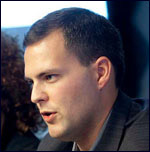 According to consultant James Bosworth, Honduras, like El Salvador and Guatemala, has experienced the effects of organized crime in Mexico, especially with respect to illicit trafficking. In recent years, the country has recorded one of the highest (if not the highest) homicide rates in the world, upwards of 60 murders per 100,000 inhabitants. Honduras has also become one of the world's most dangerous countries for journalists. However, Bosworth said, what distinguishes Honduras from its Central American neighbors is the 2009 coup against President Manuel Zelaya. The coup facilitated the expansion of organized crime in the country and demonstrated to the international community the incompatibility of goals of democracy promotion and public security.
According to consultant James Bosworth, Honduras, like El Salvador and Guatemala, has experienced the effects of organized crime in Mexico, especially with respect to illicit trafficking. In recent years, the country has recorded one of the highest (if not the highest) homicide rates in the world, upwards of 60 murders per 100,000 inhabitants. Honduras has also become one of the world's most dangerous countries for journalists. However, Bosworth said, what distinguishes Honduras from its Central American neighbors is the 2009 coup against President Manuel Zelaya. The coup facilitated the expansion of organized crime in the country and demonstrated to the international community the incompatibility of goals of democracy promotion and public security.
Prior to the coup, the dynamics of organized crime in Honduras involved the transport of cocaine from Peru or Colombia via air or sea. Once drugs arrived, the process was then "Mexicanized" by the Sinaloa cartel and the Zetas, which moved the product out of the country either by land or by sea, respectively. Generally, the planes moving cocaine into the country are crash-landed to destroy the evidence. The movement of drugs in Honduras is tied to human smuggling; the Zetas in particular have been known to kidnap migrants for ransom, or demand that they traffic drugs into the United States. Honduran officials cite violence at the local level—related to drug consumption and local drug-trafficking—as a key concern. According to Bosworth, Honduras has the largest absolute number of gang members in Central America. While not directly involved in the transnational enterprise itself, as in El Salvador, gangs provide muscle for the Mexican organizations. They have also achieved territorial control in certain neighborhoods of San Pedro Sula and Tegucigalpa, where extortion serves as their primary source of income. Further, gangs pose a major challenge to the effectiveness of the country's prison system; prisoners are able to coordinate and execute illegal activities from inside of the prison, as well acquire weapons within the prison.
In 2006, President Manuel Zelaya pledged to address crime and especially the gang problem, but crime continued to increase during his administration. Yet he paid little attention to security, opting in the time leading up to the coup to instead focus on a process of constitutional reform. The coup further drew the state's attention away from organized crime and toward the crisis of governance. Control of the airspace was lost and the security forces were diverted toward repressing protestors and preventing Zelaya from reentering the country. At the same time, the international community protested what they saw as a threat to Honduran democracy by severing diplomatic ties and cutting off other resources necessary for information sharing about transnational organized crime. According to Bosworth, this lack of intelligence diminished the Honduran attorney general's ability to track the movements through Honduras of major traffickers like "El Chapo" Guzmán.
As a result of the sudden loss of resources and information-sharing capabilities, the Honduran government became extremely limited in its capacity to challenge the practically unlimited resources of organized crime groups. The cartels were able to take advantage of this weakness, as demonstrated by the estimated 500-1000 tons of cocaine that moved through the country during the government of interim President Roberto Micheletti. This trend has stabilized under current President Porfirio Lobo, with the reestablishment of information sharing and the priority his administration has given to the security issue. However, Lobo's methods for confronting crime have not led to a reduction in homicide rates and some government opponents are concerned about what they see as an increase in repression. For example, Lobo has called on the military to participate in public security operations, not only in high-crime urban areas but also in areas with social or political unrest. This has led to accusations that the Lobo government pays little attention to human rights and does not differentiate between criminal activity and legitimate social movements. In this context, Bosworth warned that political tensions in the aftermath of the coup could prove debilitating for the fight against organized crime in Honduras.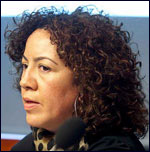 Freelance journalist Julie López described Guatemala as a state fighting two wars: one with organized crime and one with itself, confronting a legacy of corruption and impunity rooted in the 36-year internal armed conflict. She emphasized that organized crime incorporates not only foreign criminal networks and local criminal organizations, but also local authorities—military, police, and civilian. As in El Salvador, the roles these actors played during the country's civil conflict are an important—though not the only—part of the current dynamic of crime and violence in the country. According to López, organized crime in Guatemala was sheltered by the armed conflict and grew following the end of the war.
Freelance journalist Julie López described Guatemala as a state fighting two wars: one with organized crime and one with itself, confronting a legacy of corruption and impunity rooted in the 36-year internal armed conflict. She emphasized that organized crime incorporates not only foreign criminal networks and local criminal organizations, but also local authorities—military, police, and civilian. As in El Salvador, the roles these actors played during the country's civil conflict are an important—though not the only—part of the current dynamic of crime and violence in the country. According to López, organized crime in Guatemala was sheltered by the armed conflict and grew following the end of the war.
The Colombian cartel incursion into Guatemala was ultimately facilitated by military corruption. It was not until the 1996 peace accords and the withdrawal of the military—the main contacts for Colombians—that Colombian influence declined and the Mexican cartels entered to fill the vacuum. Now, the Zetas have taken over the northern area of Huehuetenango. The Sinaloa cartel, on the other hand, operates mostly in the southern and eastern parts of the country. Of the seven organized crime groups alleged to be operating in Guatemala, López identified two in particular as "historical anchors" in Guatemala. The Lorenzano and Mendoza families control drug-trafficking in Zacapa and Petén, respectively. These family-oriented structures—composed of fathers, sons, and sons-in-laws—appear to coexist with the Mexican cartels and exercise control over territories and populations. The relationships these groups foster at the local level help guarantee their impunity; it has been suggested that the local police in Zacapa warn the Lorenzanos of any attempts to arrest them and they appear to be supported by their community.
Organized crime structures are complicated not only by the relationships they have with the authorities, but also by the diversity of their activities. For example, organized crime groups are linked with the maras through narcomenudeo and the trade in advanced weapons. The maras are responsible for 48 percent of crime in Guatemala City and estimates indicate that between 1.2 and 1.8 million weapons are in use in Guatemala. Violence is exceptionally high compared to the period of the armed conflict. Although only about 10 percent of the cocaine trafficked in the country is for local distribution or consumption, there is increasing violence associated with payment in product for transportation and protection services.
Almost all institutions—civilian, military, and police—have shown some connection to organized crime and attempts to address this corruption have created unique challenges. Police reform and the transformation of the military's role with respect to public security are major areas of focus. The government's attempts to demilitarize and reform the police coincide with a strategy of militarizing certain parts of the country overtaken by drug-trafficking. In addition, a deeper and more comprehensive police reform is financially impeded by the government's inability to convince the Congress and society to raise taxes. The public sector in Guatemala is also historically weak. According to López, this is mainly the result of nepotism and an ineffectual public service law. Further, it is extremely difficult to pass legislation regarding justice and security; at the moment, 14 different political parties are represented in Congress; while this prevents any singular source of control in the legislature, it also reflects the difficulty of sustaining policies over time. López emphasized the need for reforms that promote continuity of security policies "as opposed to the current practice of quickly wiping away policies when a new official is appointed…"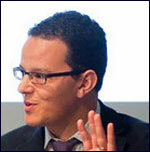 Colombian analyst Juan Carlos Garzón, author of Mafia & Co.: The Criminal Networks in Mexico, Brazil, and Colombia, discussed regional trends and the similarities and differences among the three Central American cases. He posited that while Colombia, Mexico, and Brazil are considered to be the organized crime hubs for the region, the Triangulo Norte of Central America constitute "emerging powers." Central America is a strategic corridor for trafficking drugs into the United States as well as a source of legal exports to the U.S. market. The illegal markets in Guatemala, El Salvador, and Honduras run parallel to the legal market. However, high levels of violence, police corruption, impunity, and the infiltration of state institutions by organized crime have increasingly fostered connections between the illegal and legal worlds. Garzón noted the disorganization of "organized crime" groups in the three countries. Recognized criminal actors include the infamous maras and groups influenced by the established Colombian and Mexican organizations; but there are also a number of groups involved with criminal activity that are not maras, clandestine networks, or "pseudo-cartels." Echoing Farah, Garzón noted that Central American criminal networks are often rooted in structures developed during the conflict in El Salvador and Guatemala; thus, they are more sophisticated than originally imagined. Factors such as a chaotic penal system in which "prisons are really universities for criminals," fluid migration, and the disappearance of state boundaries when it comes to organized crime all present challenges to the state's ability to combat criminal groups.
Colombian analyst Juan Carlos Garzón, author of Mafia & Co.: The Criminal Networks in Mexico, Brazil, and Colombia, discussed regional trends and the similarities and differences among the three Central American cases. He posited that while Colombia, Mexico, and Brazil are considered to be the organized crime hubs for the region, the Triangulo Norte of Central America constitute "emerging powers." Central America is a strategic corridor for trafficking drugs into the United States as well as a source of legal exports to the U.S. market. The illegal markets in Guatemala, El Salvador, and Honduras run parallel to the legal market. However, high levels of violence, police corruption, impunity, and the infiltration of state institutions by organized crime have increasingly fostered connections between the illegal and legal worlds. Garzón noted the disorganization of "organized crime" groups in the three countries. Recognized criminal actors include the infamous maras and groups influenced by the established Colombian and Mexican organizations; but there are also a number of groups involved with criminal activity that are not maras, clandestine networks, or "pseudo-cartels." Echoing Farah, Garzón noted that Central American criminal networks are often rooted in structures developed during the conflict in El Salvador and Guatemala; thus, they are more sophisticated than originally imagined. Factors such as a chaotic penal system in which "prisons are really universities for criminals," fluid migration, and the disappearance of state boundaries when it comes to organized crime all present challenges to the state's ability to combat criminal groups.
Currently, states employ the military to reinforce or replace the police who are seen as corrupt. However, Garzón disagreed with the notion that the military is less corrupt than the police, particularly in light of the human rights violations that frequently occur when the military is sent into the streets. The deeper problem highlighted in all three papers is that the capacity of organized crime groups is greater than that of the police. Consequently, officials must ensure that the police possess adequate resources to fight organized crime and in the meantime, properly regulate and limit the role of the military. Failure to do this contrasts with the ability of organized crime groups to learn, evolve, and create long-term strategies in the face of the short-term solutions offered by the state.
Garzón identified a number of issues brought out in the case studies. First, the links between organized crime and the FMLN and ARENA in El Salvador, the dramatic consequences of the coup in Honduras for crime, and organized crime's penetration of Congress in Guatemala all serve to highlight the connection between organized crime and politics. Garzón also thought it important to explain how Nicaragua figured in the Central American context, and why crime and fear of crime in Nicaragua are less than in its neighbors. Third, he questioned how combating organized crime in the Northern Triangle would affect global production markets, and particularly the incursion of Mexican cartels into markets heretofore untouched—such as Costa Rica and other countries in South America. When policies against organized crime are successful in one area—such as Colombia—how does crime shift to other areas? Further, what are the consequences of the incursions of Mexican and Colombian organized crime groups for homegrown organizations in each country? Garzón suspected that traditional elites would be displaced by new elites that base their economies on illegal activities and contribute their own resources to elections.
Another important trend concerns the growth of local markets; traffickers have determined that while local markets do not provide big profits, they do provide a regular and fluid source of income. The violent consequences of narcomenudeo, discussed in all three papers, are of increasing importance. Local activities are changing and urbanizing. The mid-2010 transport strike in San Salvador demonstrated the control that criminal groups exercise over local services and the degree to which cities are not prepared to respond to organized crime. Finally, political factors will influence how the security agenda is defined and how policies are developed to respond to organized crime. These political factors include the levels of polarization in the countries, the 2011 elections in Guatemala—where criminal structures operate in over 40 percent of the territory—and the role of military forces in suppressing political protest in Honduras.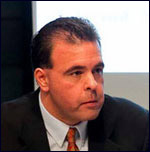 Christopher C. Ashe of the State Department's Central American Regional Security Initiative (CARSI) described mostly frustration in light of the steady deterioration of security in Central America since 2008. He noted that homicide rates in Honduras alone exceed the combined rate of all countries of the European Union. Secretary of State Hillary Clinton traveled to Guatemala in March 2010 and has taken a personal interest in Central America. Citizen security is the principal concern for the region, he said, and without development, investment, and social inclusion, the situation will not improve. Domestic demand for drugs is an issue now as opposed to ten years ago, and youth gangs are becoming far worse. He noted a daunting list of challenges: corruption is endemic through all levels of government; the region suffers from "massive income disparities"; tax systems do not generate sufficient resources to fund the police or other rule of law institutions; prisons are ruled by prisoners; and public prosecutors and the police do not trust each other. Rates of impunity are extremely high, and although the system has the capacity to capture the "bad guys," it is unable to process them.
Christopher C. Ashe of the State Department's Central American Regional Security Initiative (CARSI) described mostly frustration in light of the steady deterioration of security in Central America since 2008. He noted that homicide rates in Honduras alone exceed the combined rate of all countries of the European Union. Secretary of State Hillary Clinton traveled to Guatemala in March 2010 and has taken a personal interest in Central America. Citizen security is the principal concern for the region, he said, and without development, investment, and social inclusion, the situation will not improve. Domestic demand for drugs is an issue now as opposed to ten years ago, and youth gangs are becoming far worse. He noted a daunting list of challenges: corruption is endemic through all levels of government; the region suffers from "massive income disparities"; tax systems do not generate sufficient resources to fund the police or other rule of law institutions; prisons are ruled by prisoners; and public prosecutors and the police do not trust each other. Rates of impunity are extremely high, and although the system has the capacity to capture the "bad guys," it is unable to process them.
Ashe reiterated the Obama administration's emphasis on shared responsibility for drug trafficking in particular, noting that the increase in assistance for Central America—while insufficient—represented the largest infusion of law enforcement assistance in the history of the region. He emphasized the need for local elites "to step up" and pay taxes as well as deal with corruption. He described a host of efforts by the U.S. government to assist with maritime patrol and interdiction, improved border enforcement, and community policing, emphasizing the "bigger return" of work with at-risk youth and the need to re-empower communities. Ashe underscored the importance of political will on the part of host governments, emphasizing that without a willingness to address their own problems, it would be "hard to justify" U.S. involvement. Finally, he described "massive leaps" in terms of policy coordination within the U.S. government on law enforcement and development initiatives.
Documents & Downloads
- Organized Crime in Central AmericaDownload
- Organized Crime in Central AmericaDownload
- Organized Crime in Central AmericaDownload
- Organized Crime in Central AmericaDownload
- Organized Crime in Central AmericaDownload
- Organized Crime in Central AmericaDownload
- Organized Crime in Central AmericaDownload
- Organized Crime in Central AmericaDownload
- Organized Crime in Central AmericaDownload
- Organized Crime in Central AmericaDownload
- Organized Crime in Central AmericaDownload
Speakers
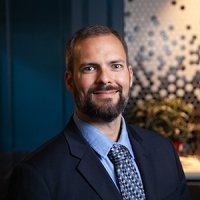
James Bosworth
Founder, Latin America Risk Report & Hxagon Consulting
Douglas Farah
Julie López
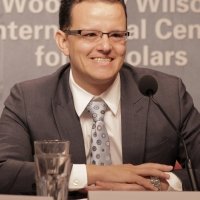
Juan Carlos Garzón
Security and Conflict Resolution Expert; Former Consultant, United Nations Development Program and Organization of American States
Christopher C. Ashe
Hosted By

Latin America Program
The Wilson Center’s prestigious Latin America Program provides non-partisan expertise to a broad community of decision makers in the United States and Latin America on critical policy issues facing the Hemisphere. The Program provides insightful and actionable research for policymakers, private sector leaders, journalists, and public intellectuals in the United States and Latin America. To bridge the gap between scholarship and policy action, it fosters new inquiry, sponsors high-level public and private meetings among multiple stakeholders, and explores policy options to improve outcomes for citizens throughout the Americas. Drawing on the Wilson Center’s strength as the nation’s key non-partisan policy forum, the Program serves as a trusted source of analysis and a vital point of contact between the worlds of scholarship and action. Read more

Mexico Institute
The Mexico Institute seeks to improve understanding, communication, and cooperation between Mexico and the United States by promoting original research, encouraging public discussion, and proposing policy options for enhancing the bilateral relationship. A binational Advisory Board, chaired by Luis Téllez and Earl Anthony Wayne, oversees the work of the Mexico Institute. Read more
Thank you for your interest in this event. Please send any feedback or questions to our Events staff.

